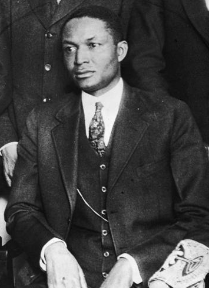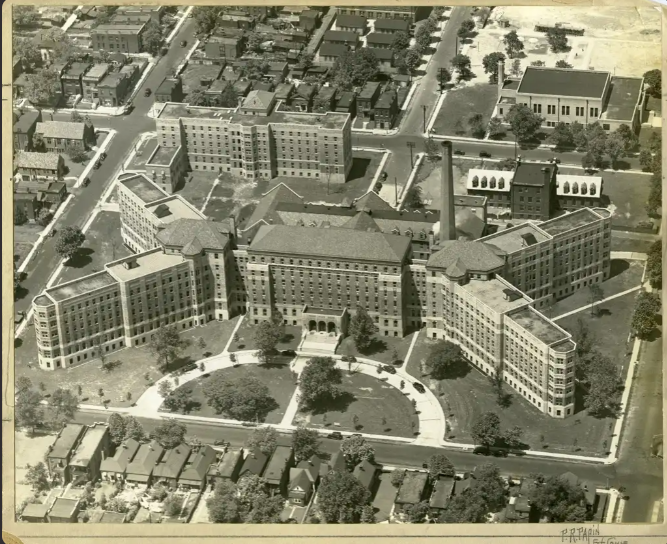The story of the man behind Homer G. Phillips Hospital is familiar to some, but a mystery to many. Interestingly, Homer Gilliams Phillips was not a physician; he was actually an attorney in the St. Louis region. Born John Wesley Phillips in Sedalia, Missouri, in 1880, he studied law at Howard University and later practiced in St. Louis

During the early 1900’s there were no hospitals for people of color. In 1919 City Hospital #2 at Garrison and Lawson Avenues was created for blacks. However, this medical facility was inadequate to the needs of St. Louis blacks.
Phillips played a major role in obtaining a key provision in the 1923 bond issue for a Negro Hospital. In 1922 Phillips led the way to secure 1 million dollars to build a new hospital for African Americans in North St. Louis. A bond was eventually issued to build a new hospital to replace the St. Louis Barnes Hospital, which was for white residents only.
Homer found himself in a battle against the city forcing blacks to use the outdated Deaconess Hospital as a replacement for City Hospital #2. Phillips eventually won the fight and the construction of what would later become Homer G. Phillips began in 1932.

If Black individuals could not receive fair treatment, respect, and dignity from white hospitals, and if Black doctors were denied the training they deserved, then we would create our own facilities. Thanks to the determination of Attorney Phillips, we accomplished that goal.
Located in The Ville neighborhood, it was the first teaching hospital for Blacks located west of the Mississippi. Homer G. Phillips was known to have trained the “Largest number of Black doctors and nurses in the world”.
Homer G. Phillips Hospital was the only public hospital for African Americans in St. Louis, Missouri until the 1950’s, when the city began to desegregate. It continued to operate even after desegregation until its closure in 1979.
At one point, Homer G. Phillips Hospital was ranked among the top 10 hospitals in the United States, yet it remained significantly underfunded. During the mid-20th century, St. Louis was home to one of the few hospitals where African Americans could receive medical training. Additionally, it included a nursing school as well as programs for training X-ray technicians and medical record-keeping.
Tragically, Phillips was shot and killed before the hospital’s construction was completed. However, following a significant public outcry, City Hospital #2 was renamed in his honor as Homer G. Phillips. Although it is no longer an active health facility, it was designated a St. Louis Landmark in 1980 and added to the National Register of Historic Places in 1982.
Follow STL Black Biz on Facebook and Instagram
